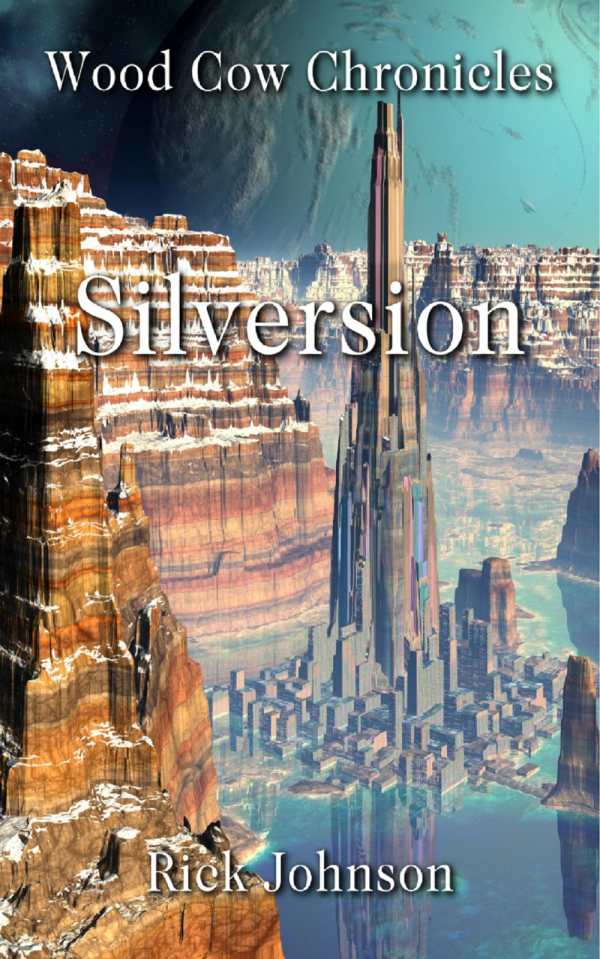Silversion
Wood Cow Chronicles, Book 3
It’s impossible not to care about what happens to these merry anarchists as they seek to unchain themselves and their fellow creatures.
Individual heroism takes a sideline to mutual aid, horizontal organizing, and celebrating diverse talents in Silversion. This third installment of Rick Johnson’s Wood Cow Chronicles finds opponents to the standing regime working to bring a large population of escaped prisoners and slaves to freedom, while political turmoil swirls throughout the land.
In the worldview of Wood Cow protagonists Helga and Bem, beasts of all stripes and sizes should be judged on their own actions, meriting respect by virtue of their mere existence. Unfortunately, they exist in a society ruled by a tyrannical order of High Ones, Owners, Silvers, and Preens, while enslaved masses serve their unquenchable thirst for material wealth. Mining, land grabs, indentured servitude, blind religious devotion, militarism, and severe social hierarchy are the forces against which their growing network of comrades battle.
Johnson’s writing is action-driven without sacrificing character development. The realm is populated with power-hungry villains who are neither cartoonish nor exaggerated, vapid wealth-seekers who joyously participate in a culture founded on flash and overconsumption, and hired goons and yes-men who use violence against a vast majority of simple creatures who would rather lead quiet lives than compete within these imposed and shallow pseudo-existences. Although the coincidences that weave story lines together are occasionally a tad convenient, overall the writing is strong, and scenes play out vividly on the page.
Silversion’s strength lies in its compelling use of suspense. Characters are divided by circumstance and become entangled in local struggles, while the bigger picture comes ever-more-clearly into view. The strongholds of power crack and crumble with the momentum of numerous insurrections boiling to the surface all at once. Johnson has done well to tease at the next chronicle.
Despite making use of some classic elements of fantasy (dragons, warrior cultures, sea-battles, and communities of clothed and speaking nonhuman animals), this narrative is firmly grounded in a realistic worldview. Although there are significant victories achieved in the course of this tale, major gains for the common folk remain vulnerable during the revolutionary moment, as power-plays continue and the old guard seeks to reestablish its stranglehold on the newly liberated.
It is easy to picture the scenes Johnson paints, altogether familiar yet exciting. The ever-present dangers of sharks, pirates, dragons, and industrialists are illustrated through convincing, lively dialogue. Johnson’s creative and uncomplicated use of dialect and slang brings the background of each character to light, making it easy to empathize and identify with them. It feels quite logical to care about what will happen to these merry anarchists, as they seek not to champion themselves or to gain power, but simply to unchain themselves and their fellow creatures.
Reviewed by
Patty Comeau
Disclosure: This article is not an endorsement, but a review. The publisher of this book provided free copies of the book and paid a small fee to have their book reviewed by a professional reviewer. Foreword Reviews and Clarion Reviews make no guarantee that the publisher will receive a positive review. Foreword Magazine, Inc. is disclosing this in accordance with the Federal Trade Commission’s 16 CFR, Part 255.

